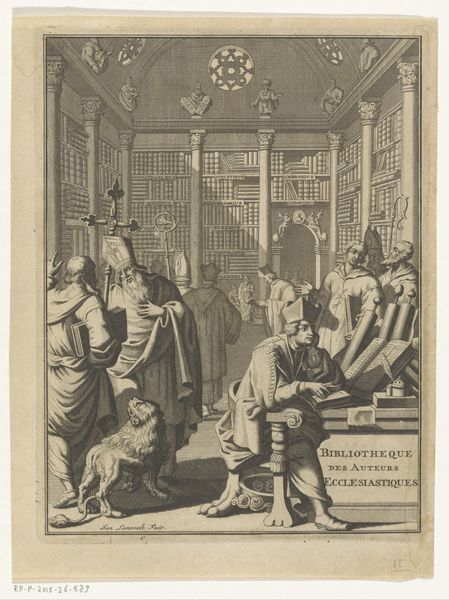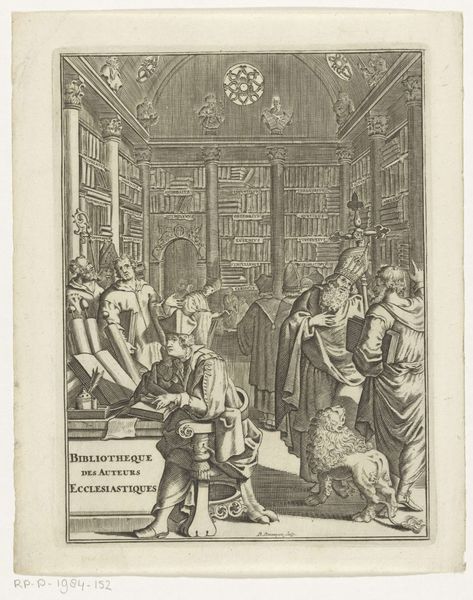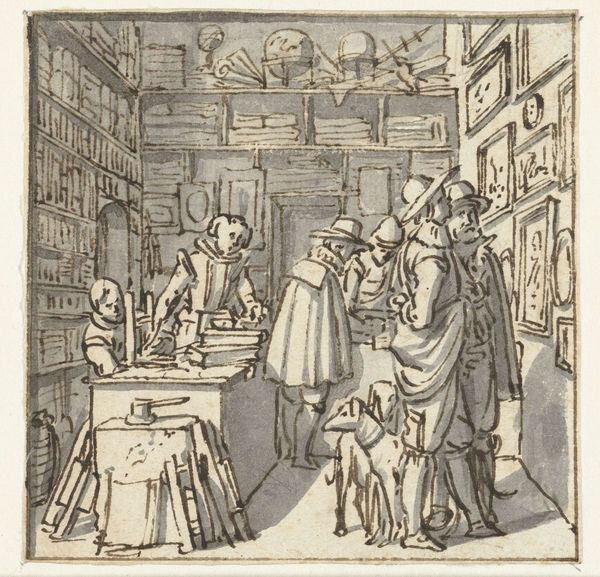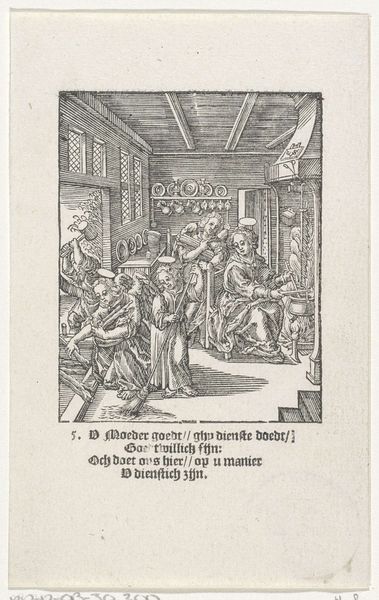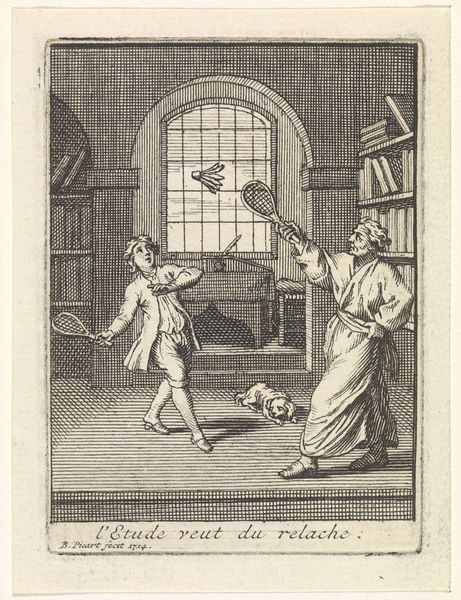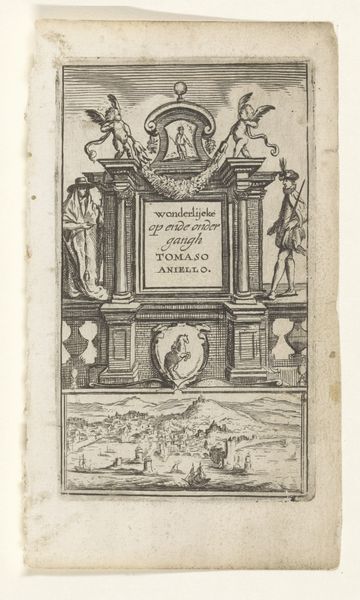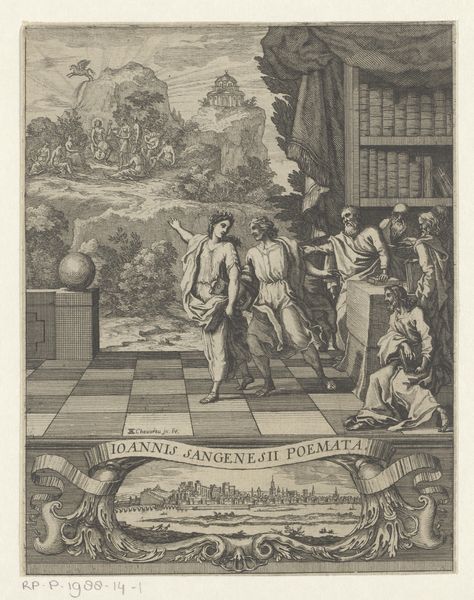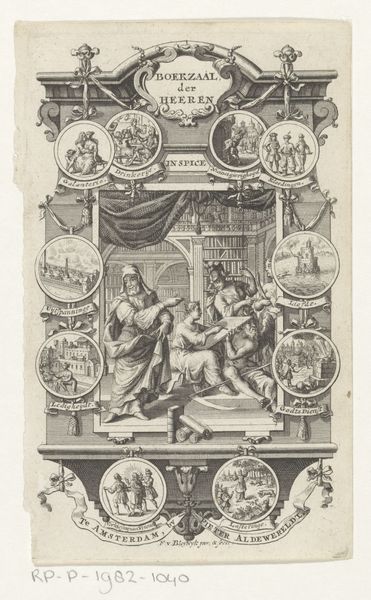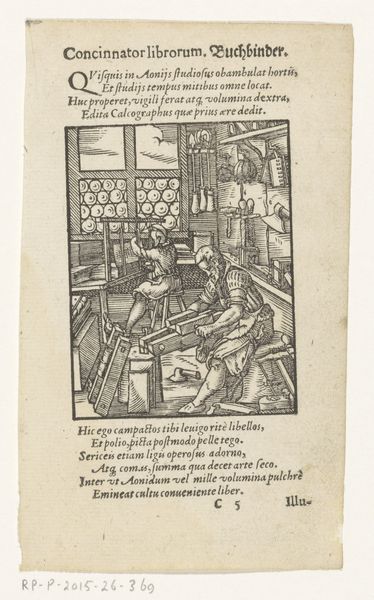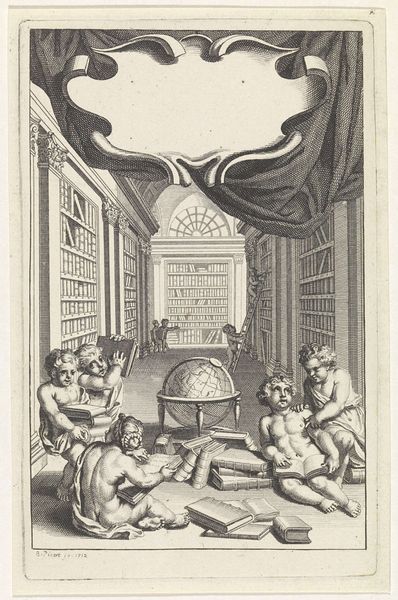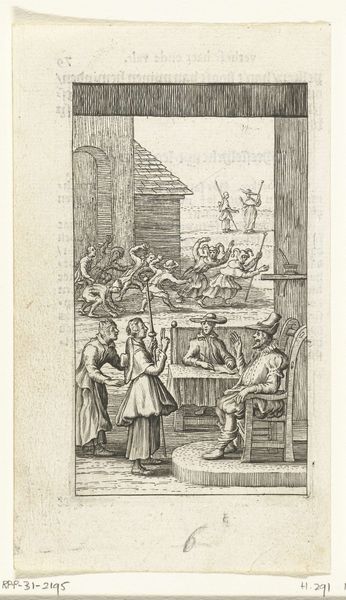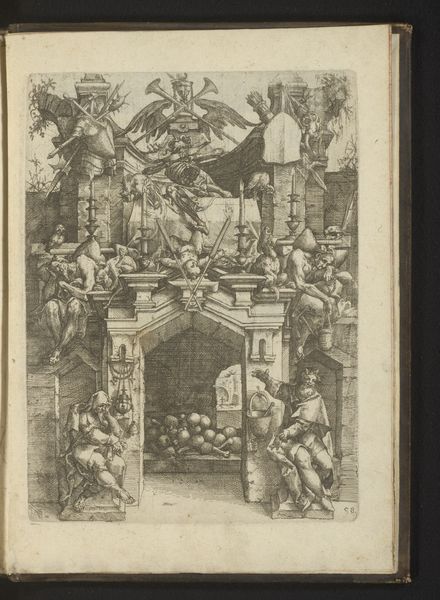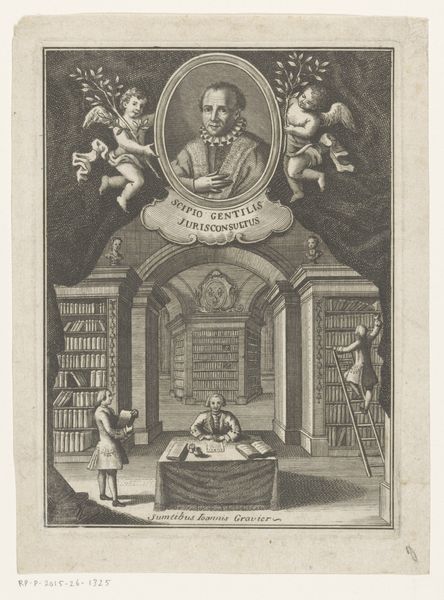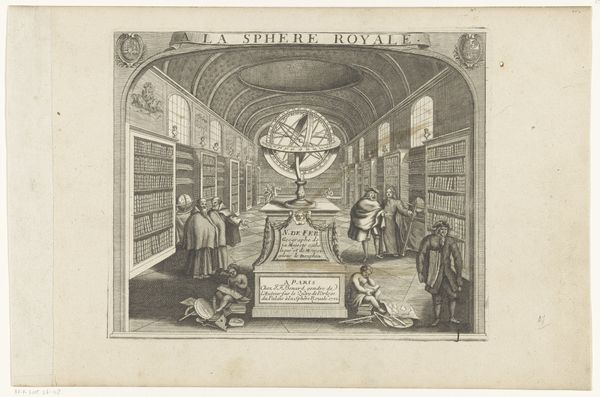
drawing, print, ink, engraving
#
drawing
#
baroque
#
pen drawing
# print
#
perspective
#
ink
#
line
#
cityscape
#
genre-painting
#
engraving
Dimensions: height 123 mm, width 66 mm
Copyright: Rijks Museum: Open Domain
Curator: This detailed drawing is titled "Interieur van de boekhandel van Theodore de Hansy," likely made sometime between 1726 and 1771. It appears to be an engraving or print. What strikes you about it? Editor: Well, the cross-hatching used to create shadows gives the scene a somewhat tense, almost agitated quality. It's as if the books themselves are teeming with secrets or energy, heightened by the theatrical grouping of figures and the baroque title cartouche below. Curator: Absolutely, and the production itself – the labour behind creating this image, carefully etching those lines, speaks to a larger printmaking industry. Consider the use of perspective; it draws your eye through the bookstore, to the building seen through the arch, possibly even hinting at the world that is available through books and knowledge. The materials themselves—the ink, the paper—they all had specific origins, costs, and were circulating within a particular economic system. Editor: That receding space is very interesting. Placing a distinct landmark beyond the bookshop seems like a statement on how the institution fits into public life. Bookshops like this fostered public discourse and the distribution of ideas. Curator: And ideas have a material existence too, don't they? Ink on paper made accessible to be consumed and create meaning. The layers here run deep, as an anonymous author allows us to glimpse at commerce. Editor: Agreed. This image also highlights the institutional role of bookstores in shaping public opinion through the circulation of printed matter. Curator: For me, it showcases that tension of labor. From its creator etching the printing plate, to de Hansy distributing the prints at his bookshop: How are materials produced, distributed, and consumed? The print is both an aesthetic object, but is also one with its own complicated biography and history in the cultural landscape. Editor: Seeing it from that point of view adds so much context. The work goes from an everyday scene, to part of a machine distributing cultural capital. Curator: Precisely. A commercial object rooted in a broader social and material web. Editor: Looking at it in this light has given me a greater appreciation for not just the art, but its role in documenting and even shaping history. Thank you. Curator: My pleasure. Now that we've explored its material and the context, I can see this artwork has another layer that may have passed my initial readings... Thanks for helping me see the historical and social context embedded within.
Comments
No comments
Be the first to comment and join the conversation on the ultimate creative platform.
